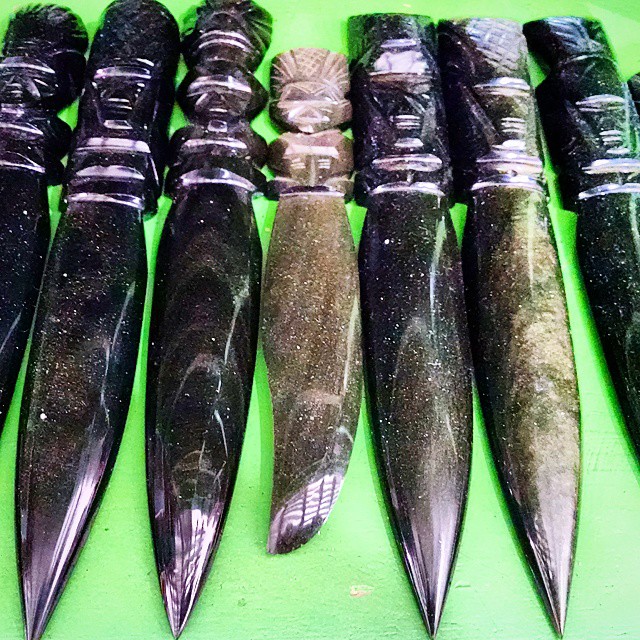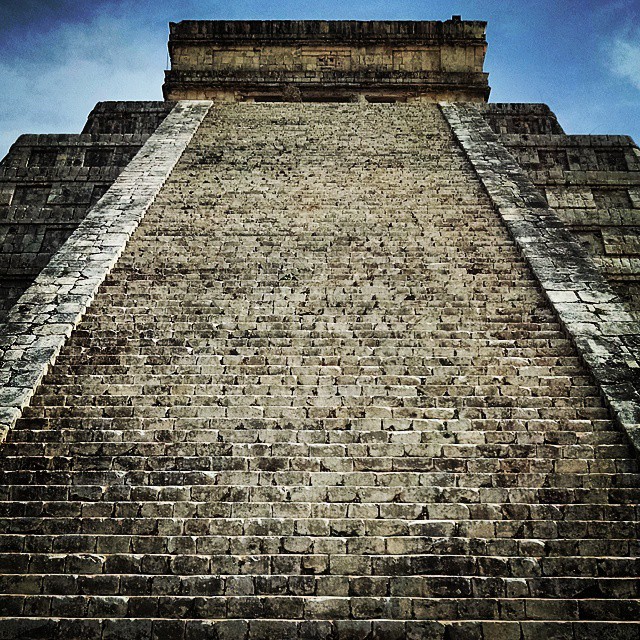As giant piles of rocks go, the El Castillo pyramid at Chichen Itza, Yucatan Mexico, was a pretty phenomenal achievement of Mayan engineering. El Castillo was built sometime between the 9th and 12th centuries, and has 91 steps on each side, adding to a total of 364. An additional single step at the top brought the temple in alignment with the modern yearly calendar of 365, one trip, more or less, around the giant ball of fire in the sky.
Was this design intentional? Opinions differ. The tour guide told us of how, on the fall and spring equinoxes of each year, the sun angles in such a way that shadows dance off the balustrade of the northwest corner, creating a shadow that resembles a serpent descending the pyramid.
The Mayans were a technolithic people. They figured how to do with stone what others had long since learned to do much more effectively through bronze and iron at the time. Check out these boss Mayan knives, carved from obsidian:

The work was impressive in terms of sheer willpower and strength, but ultimately futile.
It was internal politics and bad weathers, and not the Spaniards, who nearly extinguished them from their Central American homelands. By the time the Spanish landed, around the 16th century, the Mayan people had already dispersed into the countryside, unable to abide by the wishes and whims of the high priests.
Droughts had ravaged agriculture, and the leaders had responded, not with efforts to obtain water through better understanding of the water tables (the cenotes should have given them a clue), but with ritual and sacrifice. They were not agile enough to respond to changing conditions.
